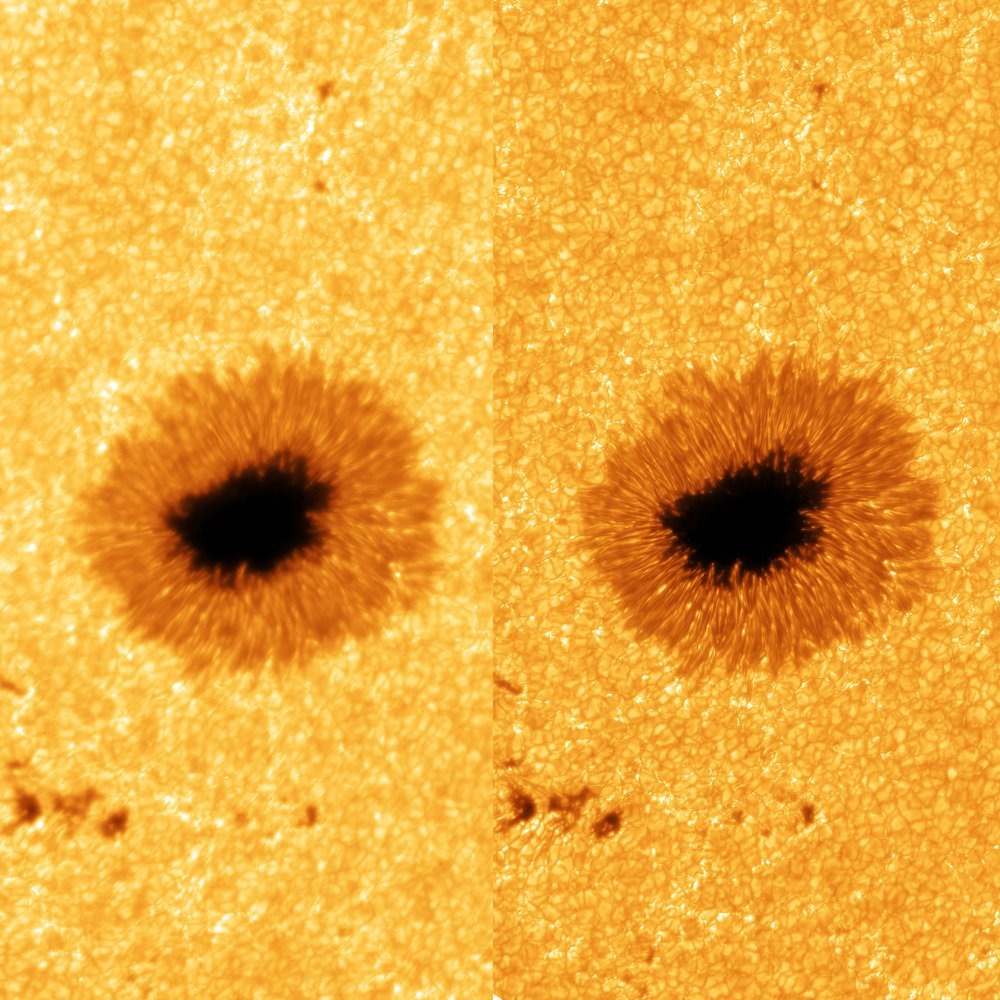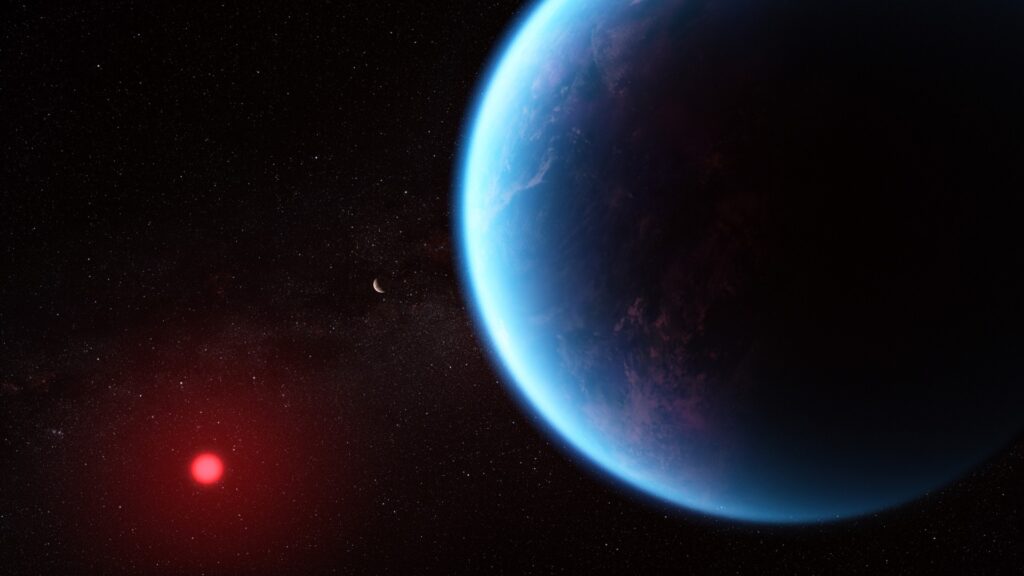CAPE CANAVERAL, Fla. — SpaceX launched its 17th rocket of the year today (June 3), sending a robotic Dragon cargo capsule toward the International Space Station before nailing a landing at sea.
A two-stage Falcon 9 rocket blasted off from Pad 39A here at NASA’s Kennedy Space Center at 1:29 p.m. EDT (1729 GMT), kicking off the company’s 22nd resupply mission to the orbiting lab for NASA. The Dragon is packed with more than 7,300 lbs. (3,311 kilograms) of supplies, scientific experiments and hardware, including two new solar arrays for the space station’s power grid.
Approximately 9 minutes after liftoff, the Falcon 9’s first stage returned to Earth, landing on one of SpaceX’s drone ships in the Atlantic Ocean in a smooth touchdown. The massive ship, called “Of Course I Still Love You,” is one of two in the company’s fleet of recovery vessels that catch falling boosters and return them to port for later reuse.
Related: SpaceX will launch baby squid and tardigrades to the space station

Dragon is scheduled to arrive at the station and dock at the Harmony module’s space-facing port Saturday (June 5) at 5 a.m. EDT (0900 GMT). There’s already another SpaceX vehicle at the orbiting lab: the Crew Dragon “Endeavour,” which launched on April 23, carrying a crew of four astronauts. (It’s not the first time that two Dragons have been parked at the same time; this is becoming a more common occurrence.)
Weather officials at the 45th Weather Squadron predicted iffy weather for today’s launch, with the potential for cumulus clouds and flight through precipitation. It is summer in Florida, which could mean afternoon thunderstorms. But, mother nature cooperated and the rocket was able to get off the ground as expected.
The first-stage booster featured in today’s flight, known as B1067, was a brand-new Falcon 9 rocket. The launcher’s stark white exterior is a sharp contrast to the sooty veterans that have ferried every other mission into space so far this year for the California-based spaceflight company.
The landing today marked the 86th recovery of a Falcon first stage since SpaceX recovered its first booster in 2015.
Big cargo haul
The newly launched cargo Dragon is carrying two different animal experiments, including the first to be performed inside Dragon as it flies to the space station. That investigation, called UMAMI, is looking at symbiotic relationships between animals (in this case, baby squid) and microbes. Another will study a group of extremophiles, known as tardigrades, to better understand what genes enable them to withstand the stressors of extreme environments, like microgravity.
Tucked inside the Dragon’s trunk are two new solar panels that will help boost the space station’s power. Redwire Space, together with Boeing, is responsible for constructing the flexible panels that will be installed later this month. Dubbed ROSA (for roll-out solar array), the panels are the first of six new solar panels that will provide the space station with a boost in power. These types of solar panels will also be used on future space missions, including NASA’s upcoming Double Asteroid Redirection Test (DART), and the Lunar Gateway.
The Dragon also has some treats on board for the crew, including apples, lemons, and avocados. In total, there are more than 7,000 lbs. (3,311 kilograms) of cargo that will help the astronauts perform a variety of research experiments as well as help to restock the station.
New generation of Dragons
The gumdrop-shaped capsule is the second upgraded Dragon cargo craft to launch to the station after SpaceX retired its previous iteration of cargo Dragon in 2020.
Designed to hold about 20% more cargo, the current model is nearly identical to its crew-toting counterpart and is bigger on the inside than its predecessor. According to Kirk Costello, NASA’s chief scientist for the International Space Station (ISS), the new iteration contains twice as many powered lockers as the earlier Dragon, which means more critical cargo and life science payload capability.
The craft can even store powered payloads while on orbit and can stay on station twice as long as the previous cargo Dragons. Another key upgrade is that the cargo ships will now splash down in the Atlantic Ocean (versus the Pacific splashdowns of past flights), providing a faster return on science.

That means researchers can get their samples and data back faster — in as little as four to nine hours after splashdown. And SpaceX can get the vehicle back more quickly and start performing inspections and maintenance before the Dragon’s next flight. Additionally, each new cargo Dragon spacecraft is certified to fly five times, versus the three times its predecessor version could fly.
Dragon and some other commercial vehicles (like Boeing’s CST-100 Starliner astronaut taxi) autonomously dock themselves to the orbital outpost, whereas other spacecraft (like Northrop Grumman’s Cygnus cargo craft) need the help of the station’s robotic arm to berth to the ISS. So where they park at the station depends on their capabilities.
Since there are limited parking spots on station, this means that on occasion, ISS crewmembers will need to move vehicles after others have left. For instance, when this cargo Dragon returns to Earth in July, the Crew-2 astronauts will move their Dragon spacecraft, so that Starliner can park in its current location.
Starliner’s coming flight, called OFT-2, is scheduled to launch on July 30. During the roughly week-long mission, an uncrewed Starliner spacecraft will dock with the ISS before returning to Earth. Boeing first attempted this uncrewed test flight in December 2019; on that try, Starliner experienced a few problems and was unable to meet up with the orbiting lab as planned.
Falcon ferry

This flight is the 17th of 2021 for SpaceX’s workhorse Falcon 9 and marks 101 consecutive successful missions since the company’s one launch failure in 2015. (A second anomaly occurred on the pad in 2016.)
Today’s flight was the first this year to feature a brand-new Falcon 9 rocket. That booster, known as B1067, already has its next mission lined up: to launch the Crew-3 astronauts later this year. SpaceX kicked off a rapid launch pace last year, when the company launched a record-setting 26 missions. The company hasn’t slowed down since.
SpaceX is able to keep up its cadence thanks to a fleet of flight-proven boosters at its disposal. This means that instead of using a brand-new rocket each time, the company can refly its recovered boosters many times over. In fact, the company set a record last month when the Falcon 9 first stage known as B1051 lifted off for the 10th time. And B1051 will fly again in the near future, SpaceX representatives have said.
All of this is possible thanks to a set of upgrades the Falcon 9 received in 2018.
The rapid launch cadence has also allowed SpaceX to streamline its procedures, both pre- and post-launch. For instance, this mission marks the first time that SpaceX hasn’t fired up its brand-new rocket on the launch pad before it blasts off into space.
“Static fire” tests have become a routine part of SpaceX’s procedures leading up to launch. During this test, the Falcon 9’s first stage is held down on the launch pad while its nine Merlin 1D engines are briefly ignited. Engineers collect valuable data that tell them if the launcher and its systems are performing as expected.
In a prelaunch news briefing, SpaceX’s Sarah Walker said that the rocket was tested at company facilities in McGregor, Texas, and that trial provided sufficient confirmation that it was ready to fly.
So far this year, SpaceX has only conducted a handful of static fire tests, including one for its next flight, which is slated for early Sunday morning.
Just after midnight on June 6, the company is sending one of its veteran rockets, a two-time flier known as B1063, on a journey to orbit. Its payload: a broadband satellite for Sirius-XM radio. Dubbed SXM-8, the satellite will provide coverage to the U.S., Canada, Puerto Rico and the Caribbean.
SpaceX’s other robotic, rocket-catching drone ship, “Just Read the Instructions,” has left port and is en route to the recovery zone for the SXM-8 mission. If all goes as planned, the rockets on both missions will fly again soon.
Follow Amy Thompson on Twitter @astrogingersnap. Follow us on Twitter @Spacedotcom or Facebook.


